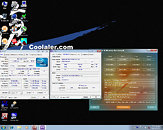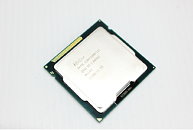Intel's upcoming Sierra Forest Xeon server chip has
debuted on Geekbench 6, showcasing its potential in multi-core performance. Slated for release in the first half of 2024, Sierra Forest is equipped with up to 288 Efficiency cores, positioning it to compete with AMD's Zen 4c Bergamo server CPUs and other ARM-based server chips like those from Ampere for the favor of cloud service providers (CSP). In the Geekbench 6 benchmark, a dual-socket configuration featuring two 144-core Sierra Forest CPUs was tested. The benchmark revealed a notable multi-core score of 7,770, surpassing most dual-socket systems powered by Intel's high-end Xeon Platinum 8480+, which typically scores between 6,500 and 7,500. However, Sierra Forest's single-core score of 855 points was considerably lower, not even reaching half of that of the 8480+, which manages 1,897 points.
The difference in single-core performance is a matter of choice, as Sierra Forest uses Crestmont-derived Sierra Glen E-cores, which are more power and area-efficient, unlike the Golden Cove P-cores in the Sapphire Rapids-based 8480+. This design choice is particularly advantageous for server environments where high-core counts are crucial, as CSPs usually partition their instances by the number of CPU cores. However, compared to AMD's Bergamo CPUs, which use Zen 4c cores, Sierra Forest lacks pure computing performance, especially in multi-core. The Sierra Forest lacks hyperthreading, while Bergaamo offers SMT with 256 threads on the 128-core SKU. Comparing the Geekbench 6 scores to AMD Bergamo EPYC 9754 and Sierra Forest results look a lot less impressive. Bergamo scored 1,597 points in single-core, almost double that of Sierra Forest, and 16,455 points in the multi-core benchmarks, which is more than double. This is a significant advantage of the Zen 4c core, which cuts down on caches instead of being an entirely different core, as Intel does with its P and E-cores. However, these are just preliminary numbers; we must wait for real-world benchmarks to see the actual performance.






